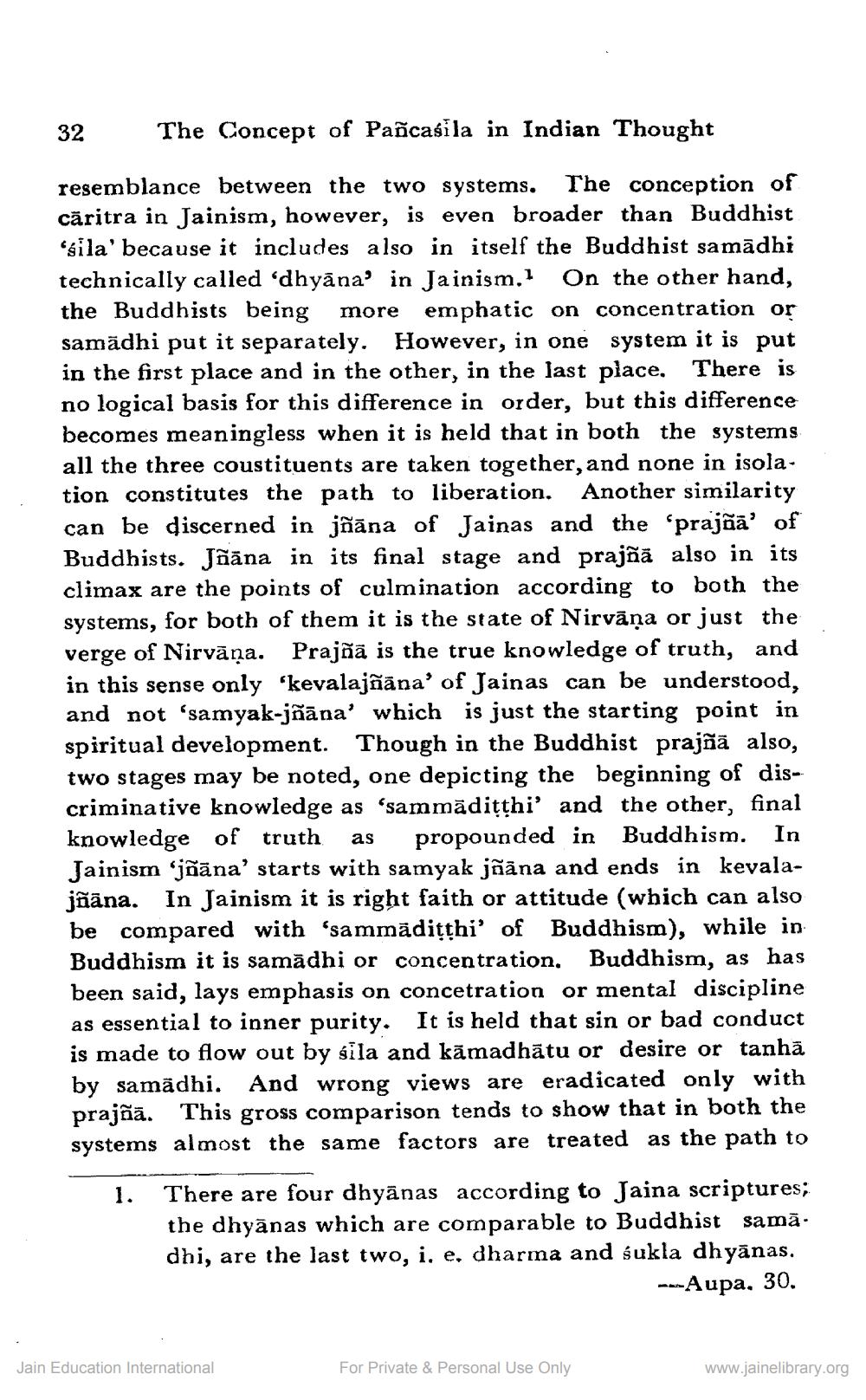________________
The Concept of Pancasila in Indian Thought
resemblance between the two systems. The conception of caritra in Jainism, however, is even broader than Buddhist 'sila' because it includes also in itself the Buddhist samādhi technically called 'dhyana' in Jainism.1 On the other hand, the Buddhists being more emphatic on concentration or samādhi put it separately. However, in one system it is put in the first place and in the other, in the last place. There is no logical basis for this difference in order, but this difference becomes meaningless when it is held that in both the systems all the three coustituents are taken together, and none in isolation constitutes the path to liberation. Another similarity can be discerned in jñāna of Jainas and the 'prajñā' of Buddhists. Jaana in its final stage and prajñā also in its climax are the points of culmination according to both the systems, for both of them it is the state of Nirvana or just the verge of Nirvana. Prajñā is the true knowledge of truth, and in this sense only 'kevalajñāna' of Jainas can be understood, and not 'samyak-jñāna' which is just the starting point in spiritual development. Though in the Buddhist prajñā also, two stages may be noted, one depicting the beginning of discriminative knowledge as 'sammadiṭṭhi' and the other, final knowledge of truth propounded in Buddhism. Jainism 'jñāna' starts with samyak jñāna and ends in kevalajñāna. In Jainism it is right faith or attitude (which can also be compared with 'sammadiṭṭhi' of Buddhism), while in Buddhism it is samādhi or concentration. Buddhism, as has been said, lays emphasis on concetration or mental discipline as essential to inner purity. It is held that sin or bad conduct is made to flow out by sila and kāmadhätu or desire or tanhä by samadhi. And wrong views are eradicated only with prajñā. This gross comparison tends to show that in both the systems almost the same factors are treated as the path to
as
In
32
1. There are four dhyānas according to Jaina scriptures; the dhyānas which are comparable to Buddhist samā. dhi, are the last two, i. e. dharma and sukla dhyānas.
---Aupa, 30.
Jain Education International
For Private & Personal Use Only
www.jainelibrary.org




